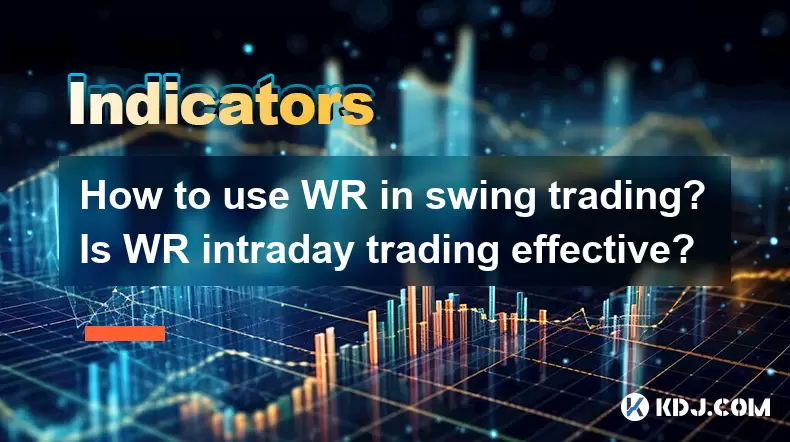-
 Bitcoin
Bitcoin $117400
-0.46% -
 Ethereum
Ethereum $3768
0.60% -
 XRP
XRP $3.551
2.09% -
 Tether USDt
Tether USDt $1.000
0.00% -
 Solana
Solana $203.2
11.30% -
 BNB
BNB $770.9
1.92% -
 USDC
USDC $0.9999
0.01% -
 Dogecoin
Dogecoin $0.2709
-0.02% -
 Cardano
Cardano $0.9024
4.49% -
 TRON
TRON $0.3139
0.60% -
 Hyperliquid
Hyperliquid $45.60
-1.41% -
 Stellar
Stellar $0.4730
-1.34% -
 Sui
Sui $4.025
2.15% -
 Chainlink
Chainlink $19.79
2.19% -
 Hedera
Hedera $0.2724
-2.39% -
 Avalanche
Avalanche $25.93
3.05% -
 Bitcoin Cash
Bitcoin Cash $524.0
-1.83% -
 Shiba Inu
Shiba Inu $0.00001558
0.50% -
 Litecoin
Litecoin $116.7
-0.30% -
 UNUS SED LEO
UNUS SED LEO $8.996
0.00% -
 Toncoin
Toncoin $3.334
1.83% -
 Polkadot
Polkadot $4.506
0.34% -
 Uniswap
Uniswap $10.99
4.83% -
 Ethena USDe
Ethena USDe $1.001
0.03% -
 Pepe
Pepe $0.00001461
3.17% -
 Monero
Monero $320.3
-1.01% -
 Bitget Token
Bitget Token $4.935
0.36% -
 Dai
Dai $0.9998
0.00% -
 Aave
Aave $322.4
-1.25% -
 Bittensor
Bittensor $455.6
9.33%
How to use WR in swing trading? Is WR intraday trading effective?
The Williams %R indicator, oscillating between 0 and -100, helps swing traders identify overbought and oversold conditions for better entry and exit points.
May 23, 2025 at 12:57 am

Swing trading and intraday trading are two popular strategies within the cryptocurrency trading community, each with its unique set of tools and indicators. One such tool that traders often utilize is the Williams %R (WR) indicator. This article will delve into how to use the WR indicator for swing trading and evaluate its effectiveness for intraday trading.
Understanding the Williams %R Indicator
The Williams %R, also known as the Williams Percent Range, is a momentum indicator that measures overbought and oversold levels. The WR indicator oscillates between 0 and -100, with readings above -20 indicating overbought conditions and readings below -80 suggesting oversold conditions. This indicator is particularly useful for identifying potential reversal points in the market.
Setting Up the WR Indicator for Swing Trading
Before diving into how to use the WR indicator for swing trading, it's crucial to set it up correctly on your trading platform. Here’s how to do it:
- Open your trading platform and navigate to the chart of the cryptocurrency you wish to trade.
- Add the Williams %R indicator to your chart. This can usually be found under the momentum indicators section.
- Adjust the period setting to a value that suits your trading style. For swing trading, a period of 14 is commonly used, but you can experiment with different periods to find what works best for you.
Using WR in Swing Trading
Swing trading involves holding positions for several days to weeks, aiming to profit from price swings. The WR indicator can be an effective tool for identifying entry and exit points in this strategy.
- Identify oversold conditions: When the WR indicator falls below -80, it suggests that the asset may be oversold and could be due for a price increase. This could be a signal to enter a long position.
- Identify overbought conditions: Conversely, when the WR indicator rises above -20, it indicates that the asset may be overbought and could be due for a price decrease. This could be a signal to enter a short position or to exit a long position.
- Confirm with other indicators: While the WR can be a powerful tool, it's beneficial to use it in conjunction with other indicators such as moving averages or the Relative Strength Index (RSI) to confirm signals and reduce false positives.
Practical Example of Using WR in Swing Trading
Let's walk through a practical example of using the WR indicator for swing trading in the cryptocurrency market.
- Choose a cryptocurrency such as Bitcoin (BTC) and open its daily chart.
- Observe the WR indicator and note when it falls below -80. For instance, if the WR indicator for BTC falls to -85, this suggests that BTC might be oversold.
- Look for confirmation: Check if other indicators, like the RSI, are also indicating oversold conditions. If the RSI is below 30, this could confirm the oversold signal.
- Enter the trade: Based on the confirmed signal, you might decide to buy BTC, expecting a price increase.
- Set a stop-loss: To manage risk, set a stop-loss order below the recent low.
- Monitor the WR indicator: Keep an eye on the WR indicator as it moves back towards -20. When it approaches this level, it might be time to consider exiting the trade to lock in profits.
Is WR Intraday Trading Effective?
Intraday trading, also known as day trading, involves buying and selling assets within the same trading day. The effectiveness of the WR indicator in this context can vary, but it is certainly used by many traders.
- Faster signals: The WR indicator can generate signals more quickly when set to a shorter period, such as 9 or 5, making it suitable for intraday trading.
- Increased volatility: Cryptocurrency markets can be highly volatile on an intraday basis, which can lead to more frequent overbought and oversold signals.
- Risk management: Due to the short-term nature of intraday trading, it's essential to use tight stop-loss orders and closely monitor the WR indicator to manage risk effectively.
Setting Up WR for Intraday Trading
To use the WR indicator for intraday trading, follow these steps:
- Open your trading platform and select the cryptocurrency you want to trade.
- Add the WR indicator to the chart, typically found under momentum indicators.
- Adjust the period setting to a shorter timeframe, such as 9 or 5, to capture intraday movements.
- Monitor the WR indicator throughout the trading day to identify overbought and oversold conditions.
Using WR in Intraday Trading
Intraday trading with the WR indicator involves quick decision-making and constant monitoring. Here’s how to use it effectively:
- Identify overbought conditions: If the WR indicator rises above -20 during the trading day, it may signal that the asset is overbought. This could be an opportunity to sell or short the asset.
- Identify oversold conditions: If the WR indicator falls below -80, it may indicate that the asset is oversold. This could be a signal to buy the asset, expecting a quick rebound.
- Use shorter timeframes: For intraday trading, use shorter timeframes such as 15-minute or 1-hour charts to get more precise signals from the WR indicator.
- Combine with other indicators: As with swing trading, it's advisable to use the WR indicator in conjunction with other tools like the Moving Average Convergence Divergence (MACD) or Bollinger Bands to increase the reliability of your signals.
Practical Example of Using WR in Intraday Trading
Here's a practical example of using the WR indicator for intraday trading in the cryptocurrency market.
- Choose a cryptocurrency such as Ethereum (ETH) and open its 15-minute chart.
- Set the WR indicator to a period of 9 to capture intraday movements.
- Monitor the WR indicator throughout the trading day. If it falls to -85, this indicates that ETH might be oversold.
- Look for confirmation: Check other indicators, such as the MACD, for bullish signals to confirm the oversold condition.
- Enter the trade: Based on the confirmed signal, you might decide to buy ETH, expecting a quick price increase.
- Set a tight stop-loss: Given the short-term nature of intraday trading, set a tight stop-loss order to manage risk.
- Exit the trade: When the WR indicator rises back towards -20, consider exiting the trade to lock in profits.
Frequently Asked Questions
Q: Can the WR indicator be used effectively in highly volatile markets like cryptocurrencies?
A: Yes, the WR indicator can be particularly useful in volatile markets like cryptocurrencies because it helps identify overbought and oversold conditions quickly. However, due to the increased volatility, it's crucial to use it in combination with other indicators and maintain strict risk management practices.
Q: How often should I adjust the period setting of the WR indicator?
A: The frequency of adjusting the period setting depends on your trading strategy and the market conditions. For swing trading, a period of 14 is commonly used, but you might need to adjust it based on the asset's volatility. For intraday trading, you might experiment with shorter periods like 9 or 5 to capture quicker movements.
Q: Is it possible to use the WR indicator for both long and short positions?
A: Yes, the WR indicator can be used to identify both buying and selling opportunities. When the indicator falls below -80, it suggests an oversold condition, which could be a signal to enter a long position. When it rises above -20, it indicates an overbought condition, which could be a signal to enter a short position or exit a long position.
Q: How can I avoid false signals when using the WR indicator?
A: To avoid false signals, it's important to use the WR indicator in conjunction with other technical indicators such as the RSI, MACD, or moving averages. Additionally, always confirm the signals with price action and volume data to increase the reliability of your trading decisions.
Disclaimer:info@kdj.com
The information provided is not trading advice. kdj.com does not assume any responsibility for any investments made based on the information provided in this article. Cryptocurrencies are highly volatile and it is highly recommended that you invest with caution after thorough research!
If you believe that the content used on this website infringes your copyright, please contact us immediately (info@kdj.com) and we will delete it promptly.
- MoonBull's Whitelist Mania: Your Last Shot at 100x Crypto Gains?
- 2025-07-22 10:30:12
- Meme Coins in 2025: Explosive Gains or Fading Fad?
- 2025-07-22 10:30:12
- Kim Keon-hee Crypto Probe: Scandal Rocks South Korea's Political Scene
- 2025-07-22 10:50:12
- ETH Holders in Profit: Value Surge Fuels Bullish Sentiment
- 2025-07-22 09:30:13
- NEAR Protocol's AI Leap: Double-Digit Gains and Future Potential
- 2025-07-22 09:30:13
- Cryptos, Meme Coins, Buy Now: Riding the Wave of Hype
- 2025-07-22 08:30:13
Related knowledge

Advanced RSI strategies for crypto
Jul 13,2025 at 11:01am
Understanding the Basics of RSI in Cryptocurrency TradingThe Relative Strength Index (RSI) is a momentum oscillator used to measure the speed and chan...

Crypto RSI for day trading
Jul 12,2025 at 11:14am
Understanding RSI in the Context of Cryptocurrency TradingThe Relative Strength Index (RSI) is a momentum oscillator used to measure the speed and cha...

Crypto RSI for scalping
Jul 12,2025 at 11:00pm
Understanding RSI in the Context of Crypto TradingThe Relative Strength Index (RSI) is a momentum oscillator widely used by traders to measure the spe...

What does an RSI of 30 mean in crypto
Jul 15,2025 at 07:07pm
Understanding RSI in Cryptocurrency TradingRelative Strength Index (RSI) is a momentum oscillator widely used in cryptocurrency trading to measure the...

What does an RSI of 70 mean in crypto
Jul 13,2025 at 06:07pm
Understanding the RSI Indicator in Cryptocurrency TradingThe Relative Strength Index (RSI) is a widely used technical analysis tool that helps traders...

Does RSI work in a bear market for crypto
Jul 16,2025 at 01:36pm
Understanding RSI in Cryptocurrency TradingThe Relative Strength Index (RSI) is a momentum oscillator used by traders to measure the speed and change ...

Advanced RSI strategies for crypto
Jul 13,2025 at 11:01am
Understanding the Basics of RSI in Cryptocurrency TradingThe Relative Strength Index (RSI) is a momentum oscillator used to measure the speed and chan...

Crypto RSI for day trading
Jul 12,2025 at 11:14am
Understanding RSI in the Context of Cryptocurrency TradingThe Relative Strength Index (RSI) is a momentum oscillator used to measure the speed and cha...

Crypto RSI for scalping
Jul 12,2025 at 11:00pm
Understanding RSI in the Context of Crypto TradingThe Relative Strength Index (RSI) is a momentum oscillator widely used by traders to measure the spe...

What does an RSI of 30 mean in crypto
Jul 15,2025 at 07:07pm
Understanding RSI in Cryptocurrency TradingRelative Strength Index (RSI) is a momentum oscillator widely used in cryptocurrency trading to measure the...

What does an RSI of 70 mean in crypto
Jul 13,2025 at 06:07pm
Understanding the RSI Indicator in Cryptocurrency TradingThe Relative Strength Index (RSI) is a widely used technical analysis tool that helps traders...

Does RSI work in a bear market for crypto
Jul 16,2025 at 01:36pm
Understanding RSI in Cryptocurrency TradingThe Relative Strength Index (RSI) is a momentum oscillator used by traders to measure the speed and change ...
See all articles

























































































